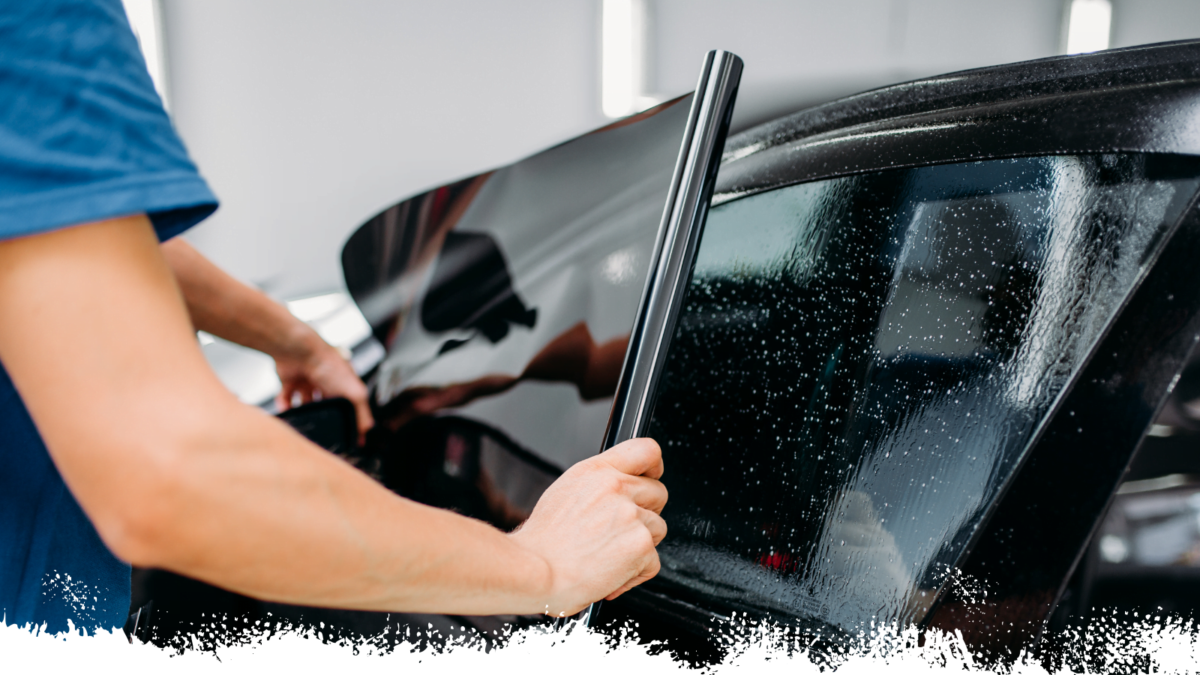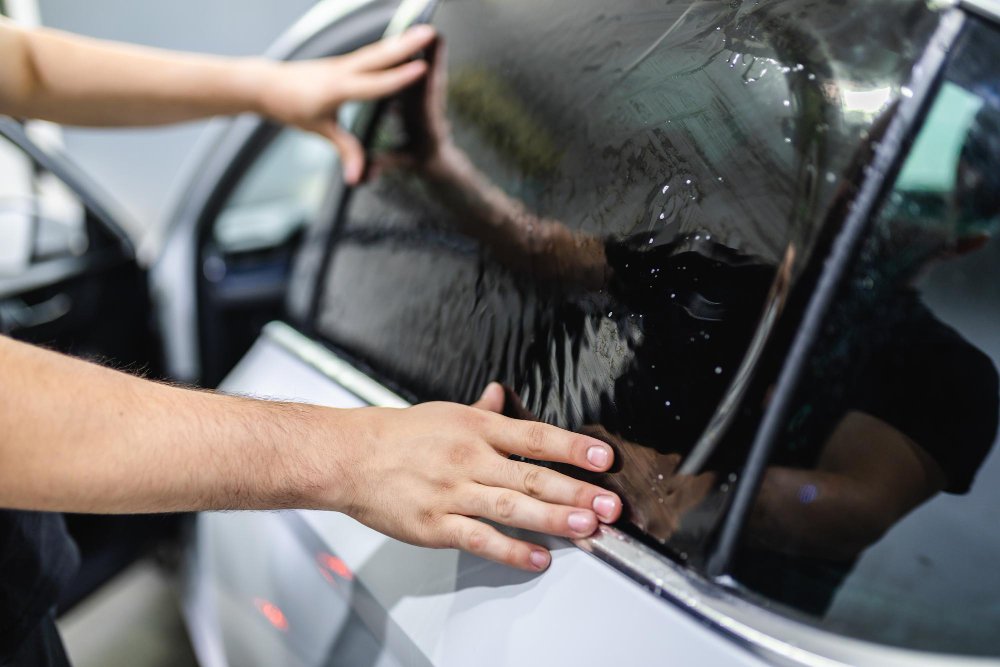Checking Out the Various Kinds of Home Window Tint for Cars and Their Benefits

Dyed Home Window Color
Colored window tint is a preferred selection among auto proprietors looking for to enhance privacy and decrease glow while maintaining a fashionable look. This kind of tint is produced by integrating color into the sticky layer, which is then applied to the home windows of the car. The primary allure of colored home window color hinges on its ability to supply a cosmetically pleasing look without compromising performance.
One of one of the most substantial benefits of colored window tint is its ability to obstruct dangerous UV rays, aiding to shield both passengers and the vehicle's inside from sun damages. Additionally, this tint efficiently decreases glare, contributing to a more comfortable driving experience, especially during intense daylight conditions. The growing of window shade also adds a layer of personal privacy, making it more tough for outsiders to see inside the lorry.
However, it is important to note that while colored home window color supplies various benefits, it might not offer as much heat rejection as various other kinds of colors. In addition, its longevity can be affected by exposure to extended sunshine, potentially bring about fading in time. In general, colored home window tint stays a preferred alternative for those focusing on aesthetic appeals and basic sun security.
Metalized Window Tint
Metalized window tint represents an advanced choice for vehicle proprietors looking to improve both efficiency and appearances. One of the main benefits of metalized window color is its exceptional warm denial capabilities, which can significantly decrease the interior temperature of an auto.
In addition, metalized colors use enhanced toughness contrasted to colored movies, making them resistant to fading and scraping. This long life makes sure that the tint keeps its effectiveness and appearance in time, offering long-lasting value.
Additionally, metalized home window tint can improve privacy and safety and security by making it extra tough for outsiders to see inside the vehicle. The reflective high quality of the color can likewise prevent potential burglary, as prized possessions are much less visible (window tinting). While it might disrupt some digital signals, such as GPS or mobile phone reception, the general benefits make metalized home window color an engaging option for numerous car proprietors
Ceramic Home Window Tint
Providing sophisticated modern technology and exceptional efficiency, ceramic home window color has become a leading selection for critical auto proprietors. This ingenious film is made up of advanced ceramic particles that provide considerable warmth being rejected while keeping clarity and exposure. Unlike conventional colors, ceramic home window tint does not count on steel or color, which can disrupt digital signals from devices such as general practitioner and cell phones.
One of the standout benefits of ceramic window tint is its exceptional UV defense. It obstructs as much as 99% of hazardous ultraviolet rays, therefore protecting both the car's interior and its owners from sun damages. Furthermore, this kind of tint enhances privacy without compromising find here visibility, making it a functional alternative for daily drivers and deluxe vehicles alike.
Ceramic window tint also flaunts longevity; it is resistant to fading and damaging, making sure durable efficiency. Its non-reflective nature indicates it does not trigger glow, contributing to more secure driving conditions (window tinting). For those looking for a costs color remedy that integrates aesthetic appeals with functionality, ceramic home window color stands apart as a premium selection, supplying enhanced convenience and security when traveling
Carbon Home Window Tint
When it involves home window tinting choices, carbon home window tint has acquired popularity for its blend of efficiency and cost. This kind of tint is made up of carbon bits, which offer a distinctive matte surface that boosts the aesthetic allure of vehicles. Among the key advantages of carbon home window color is its capability to block a considerable quantity of hazardous UV rays, safeguarding both the automobile's inside and its residents from skin damages and fading.
Furthermore, carbon window color offers exceptional warmth being rejected properties, decreasing the demand for extreme a/c and improving gas performance. Unlike colored tints, carbon colors do not discolor in time, keeping their effectiveness and appearance for many years. This resilience makes them a useful choice for auto proprietors looking for lasting worth.
Furthermore, carbon home view it now window color is non-metalized, which suggests it does not interfere with digital signals, making it suitable for cars furnished with general practitioner, Bluetooth, and various other wireless innovations. The equilibrium of price, performance, and visual charm has actually established carbon home window tint as a favored selection for lots of car proprietors. Eventually, it functions as a trustworthy service for those wanting to enhance convenience while guaranteeing design.
Manufacturing Facility Color
Manufacturing facility color, likewise understood as OEM tint, describes the tinting that is applied to vehicle home windows during the production process. This sort of color is typically incorporated into the glass itself, supplying an uniform look and regular degrees of shading throughout all home windows. The key function of manufacturing facility tint is to minimize glare and boost guest convenience while supplying a level of UV security.

While manufacturing facility tint offers basic advantages, it might not offer the very same degree of warm being rejected or privacy as higher-grade aftermarket colors. Vehicle proprietors seeking improved efficiency may take into consideration extra tinting alternatives, while still appreciating the aesthetic allure and performance factory color provides.
Verdict

Nonetheless, it is essential to note that while dyed home window color provides various benefits, it may not give as much Get More Information warm rejection as various other types of colors. For those seeking a costs color remedy that integrates visual appeals with functionality, ceramic home window tint stands out as a premium choice, providing improved convenience and protection on the roadway.
When it comes to window tinting alternatives, carbon home window tint has acquired popularity for its blend of performance and price.Manufacturing facility color, additionally known as OEM tint, refers to the tinting that is used to vehicle home windows throughout the production process. The exact degree of color can differ depending on the car producer and design, with some lorries featuring much more considerable color on back home windows than on front windows.